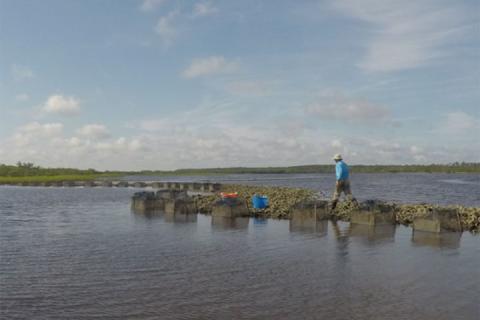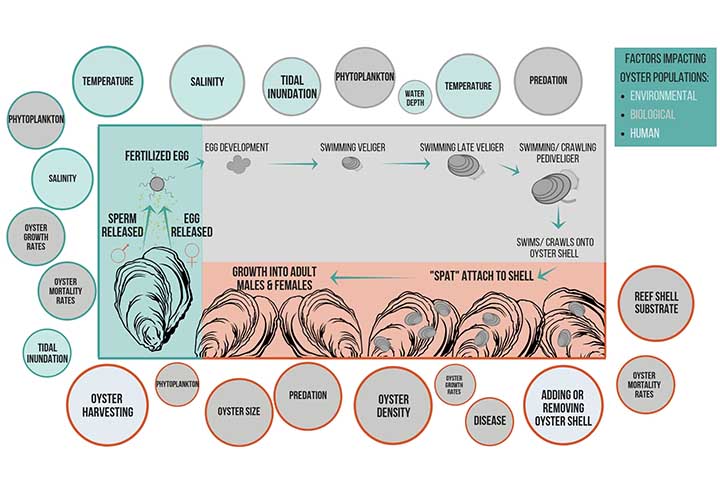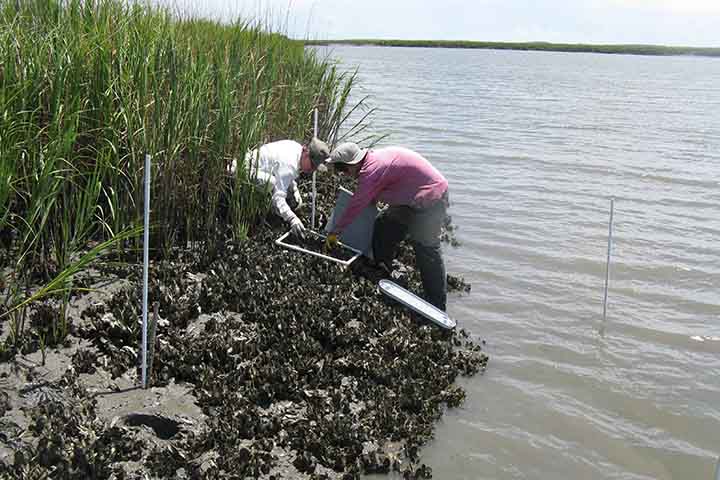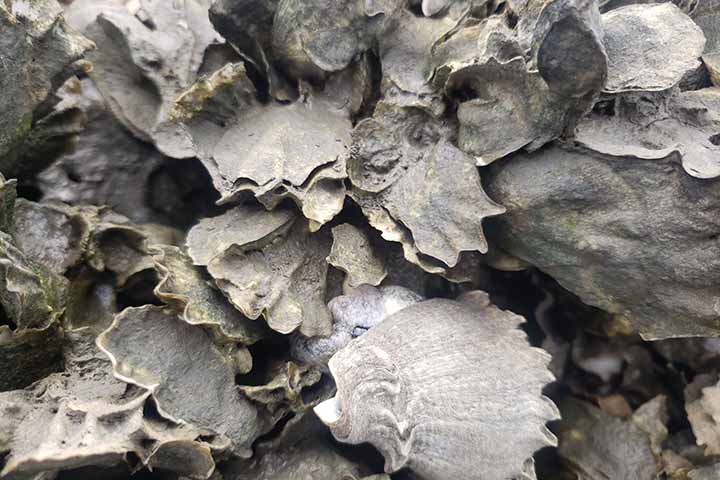
The Eastern oyster (Crassostrea virginica) is a keystone species in northeast Florida estuaries. In addition to providing important ecosystem services, such as water filtration and shoreline protection, the oyster supports a valuable recreational and commercial fishery. However, scientists, managers, and oyster harvesters are concerned about the long-term viability of oyster populations. In the Guana Tolomato Matanzas (GTM) National Estuarine Research Reserve, water quality issues have caused some areas to close to harvesting, potentially intensifying harvesting pressure on remaining open areas. Other factors, such as predation, disease, and increased salinity, can also slow growth or kill oysters. This complicated situation led stakeholders and reserve staff to establish the Guana Tolomato Matanzas Oyster & Water Quality Task Force and initiate new research efforts such as this one.
By incorporating input from end users and leveraging recently collected field data and an existing oyster population model, this project catalyzed the application of current research to address questions identified by the Task Force. The project team conducted a modeling investigation to examine the influence of environmental factors on oysters and examine oyster population dynamics in different zones within GTM Reserve. Modeling results identified areas with higher oyster reproduction, survival and growth, which can be used to focus protection and restoration efforts in areas likely to have the most impact for bolstering local oyster populations.



